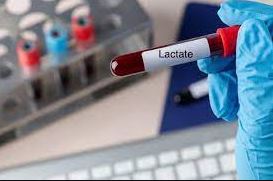The role of lactate to guide resuscitation
A clinician's perspective
Abstract
’Doctor, this patient’s lactate is raised at 4mmol/l, do you want to prescribe some fluid?’’. There have been many a time where we as clinicians have had similar encounters in our clinical journey. The reaction would be to prescribe intravenous crystalloids, however with time and recent emphasis on the importance of damage control/source control resuscitation this has been realised to be fraught with errors. The approach differs if the resuscitation is a medical or trauma based. The aim of this article is to explore some of the concerns that the emergency and critical care clinicians have from a raised lactate.
Downloads
References
2. Brooks GA. Cell-cell and intracellular lactate shuttles. J Physiol. 2009 Dec 1;587(Pt 23):5591-600. doi: 10.1113/jphysiol.2009.178350. Epub 2009 Oct 5. PMID: 19805739; PMCID: PMC2805372.
3. Marikar D, Babu P, Fine-Goulden M How to interpret lactate Archives of Disease in Childhood - Education and Practice 2021;106:167-171.
4. Rabinowitz JD, Enerbäck S. Lactate: the ugly duckling of energy metabolism. Nat Metab. 2020 Jul;2(7):566-571. doi: 10.1038/s42255-020-0243-4. Epub 2020 Jul 20. PMID: 32694798; PMCID: PMC7983055.
5. Overgaard M. Ramussen P. Bohm A. et al. (2012) Hypoxia and Exercise provoke Both lactate Release and Lactate oxidation By the Human brain The FASEB Journal 26 (7) 3012. 20
6. M.L.N.G. Malbrain, P.E. Marik, I. Witters, C. Cordemans, A.W. Kirkpatrick, D.J. Roberts, et al. Fluid overload, de-resuscitation, and outcomes in critically ill or injured patients: a systematic review with suggestions for clinical practice
Anaesthesiol Intensive Ther, 46 (5) (2014), pp. 361-380
7. W. Brinkert, J.H. Rommes, J. Bakker Lactate measurements in critically ill patients with a hand-held analyser Intensive Care Med, 25 (9) (1999 Sep 1), pp. 966-969
8. Quantifying the volume of fluid resuscitation required to normalize lactate in septic patients (Cohort Study) Chen H, Gong SR, Yu RG. Increased normalized lactate load is associated with higher mortality in both sepsis and non-sepsis patients: an analysis of the MIMIC-IV database. BMC Anesthesiol. 2022 Mar 25;22(1):79. doi: 10.1186/s12871-022-01617-5. PMID: 35337269; PMCID: PMC8951714.
9. Chen, H., Gong, SR. & Yu, RG. Association between normalized lactate load and mortality in patients with septic shock: an analysis of the MIMIC-III database. BMC Anesthesiol 21, 16 (2021).
10. Prange HD, J Appl Physiol. 2001. pp. 33–38.
11. Zhou F, Cove ME, Peng ZY, Bishop J, Singbartl K, Kellum JA. Normal saline resuscitation worsens lactic acidosis in experimental sepsis. Crit Care. 2012;16(Suppl 1):P253. doi: 10.1186/cc10860. Epub 2012 Mar 20. PMCID: PMC3363671.
12. Levraut J, Ciebiera JP, Chave S, Rabary O, Jambou P, Carles M, et al. Mild hyperlactatemia in stable septic patients is due to impaired lactate clearance rather than overproduction. Am J Respir Crit Care Med. 1998;157:1021–6.
13. Chertoff, J., Chisum, M., Garcia, B. et al. Lactate kinetics in sepsis and septic shock: a review of the literature and rationale for further research. j intensive care 3, 39 (2015). https://doi.org/10.1186/s40560-015-0105-4

Copyright (c) 2024 Author (s). Published by Siddharth Health Research and Social Welfare Society

This work is licensed under a Creative Commons Attribution 4.0 International License.


 OAI - Open Archives Initiative
OAI - Open Archives Initiative


